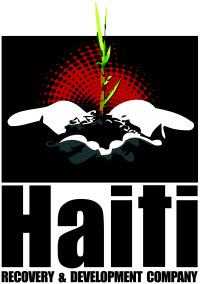Resettlement Camp Transition
Under the auspice of its “5 Cities For Haiti” initiative, it is Haiti Recovery & Development Company’s intention to responsibly participate in the transition of the Corail-Canaan-Jerusalem resettlement camps into one legally recognized city.
In the once sparsely populated providence of Croix des Bouquets, just north of Port au Prince, government authorized resettlement camps have morphed from small temporary sites to sprawling slums containing hundreds of thousands of vulnerable Haitians.
At the very least, HR&DC is committed to the stabilization of the country through mediation and constituency building in this volatile area.
History

In the wake of the 4th deadliest natural disaster in the history of mankind 1.5 million Haitians were left homeless. As a direct result, Haiti was overrun with well-intended (and some not so well-intended) supporters. From foreign governments to international organizations and institutions, NGO’s, for-profits companies and other “helpers,” Haiti became a worldwide “cause celebre.” Since then, the law of unintended consequences has migrated the country from one (natural) catastrophic event to another (man made) and the future of Haiti itself hangs in the balance.
This dire reality is most evident in the providence of Croix des Bouquets, just north of Port au Prince. HR&DC’s founder and CEO, Jim Lange, first ventured to this providence in early 2011. At that time, roughly 35,000 people populated the government’s two authorized resettlement camps, (Canaan and Corail) and its immediate surroundings. During subsequent visits to the camps site, in the fall of 2011 and early in 2012, it became readily apparent that the size of the camps (occupied land and headcount) had grown well beyond the numbers being published.
While the Government of Haiti struggled to regroup from the calamity of the earthquake, and the “helpers” of Haiti were focused mainly on relief initiatives, the alarming migration of unauthorized settlers received very little attention. This lack of attention can be attributed to three main factors:
- The Government of Haiti considered the camps to be “temporary”
- The focus of the “helpers” was squarely on relief efforts
- The land upon which the two main camps sat was in dispute
These three factors created the perfect storm. HR&DC’s founder Jim Lange summarizes the situation this way:
“…Hindsight is 20/20 and it would be easy to affix blame for what has happened in Croix des Bouquets. This is a useless and counter-productive exercise and one HR&DC has not, and will not, participate in. Instead, we have spent years developing high levels of trust and rapport with the pertinent actors and stakeholder. This ability to communicate to all constituents has afforded us the opportunity to operate as an honest broker and mediator. We are unique in this regard and we are honored to posses such latitude.”Images from the Field
Corail, Canaan, Jerusalem Resettlement Camp Transition
A HR&DC "FIve Cities for Haiti" initiative. Transitioning the resettlement camps into one legal city for Haiti
Project Goal and Objectives
Goal:
To participate in the transition of the main resettlement camps (Corail, Canaan and Jerusalem) in Croix des Bouquets into one legally recognized city.
Project Current Status
HR&DC’s “5 Cities for Haiti” initiative is actively underway in Croix des Bouquets and can best be summarized through these noted HR&DC initiative highlights:
- Mapping of the sprawling camps since 2010 from the ground and by air
- Analyzation of all published camp-centric documentation
- Interviews with pertinent camp-centric NGO’s to discuss history, present conditions and viable next steps
- Continued contact with the Mayor’s office in Croix des Bouquets to discuss the evolving crisis and possible remedies
- At the request of Haiti’s First Lady Sophia Martelly, numerous meetings with President Martelly’s lead counsel regarding resettlement camps and members of his committee (UCLBP)
- Establishment of a high level of trust with the owners of the disputed land upon which the main resettlement camps are located
- Numerous interviews with camp residents to understand their concerns, needs and desired outcome
- Numerous meetings with community leaders to understand their concerns, needs and desired outcome
- Mentoring and guidance to the camps main leadership groups
- Meeting with neighboring municipalities to discuss their assisting in transitioning governance of the newly emerging city.
- Meeting with various international agencies and institutions to discuss stabilizing and development strategies
- Acting as an honest broker and mediator with the owners of the disputed land upon which the main resettlement camps are located
Project Next Steps
In HR&DC’s role as mediator, and for legal and security concerns as well, it is inappropriate for HR&DC to discuss next steps, publicly, at this time.
Recent Blog Posts
VIEW ALL - 15 January 2019 by Bob Linger, in Blog,Haitian National Memorial & Peace Park,HR&DC,Jim's Corner,Jim's Corner
15 January 2019 by Bob Linger, in Blog,Haitian National Memorial & Peace Park,HR&DC,Jim's Corner,Jim's CornerDignity, Healing is a Two Way Street. Jim Lange HRDC
Haiti Trip (January ‘19); Day Five: I have arrived at the Port au Prince airport...READ MORE + 14 January 2019 by Jim Lange, in Blog,Economic Development,Education,Jim's Corner,Jim's Corner,Job Creation
14 January 2019 by Jim Lange, in Blog,Economic Development,Education,Jim's Corner,Jim's Corner,Job CreationJim Lange works on Job Creation, Religion and Higher Education in Haiti
Haiti Trip (January ‘19); Day Four: Today, I turn my full attention to the livin...READ MORE + 13 January 2019 by Bob Linger, in 2010 Earthquake,Blog,HR&DC,Jim's Corner,Jim's Corner
13 January 2019 by Bob Linger, in 2010 Earthquake,Blog,HR&DC,Jim's Corner,Jim's CornerSunday in Haiti. Friendship, Simple Meal. Healing.
Haiti Trip (January ‘19); Day Three: It’s a beautiful Sunday in Haiti. The sun i...READ MORE +





